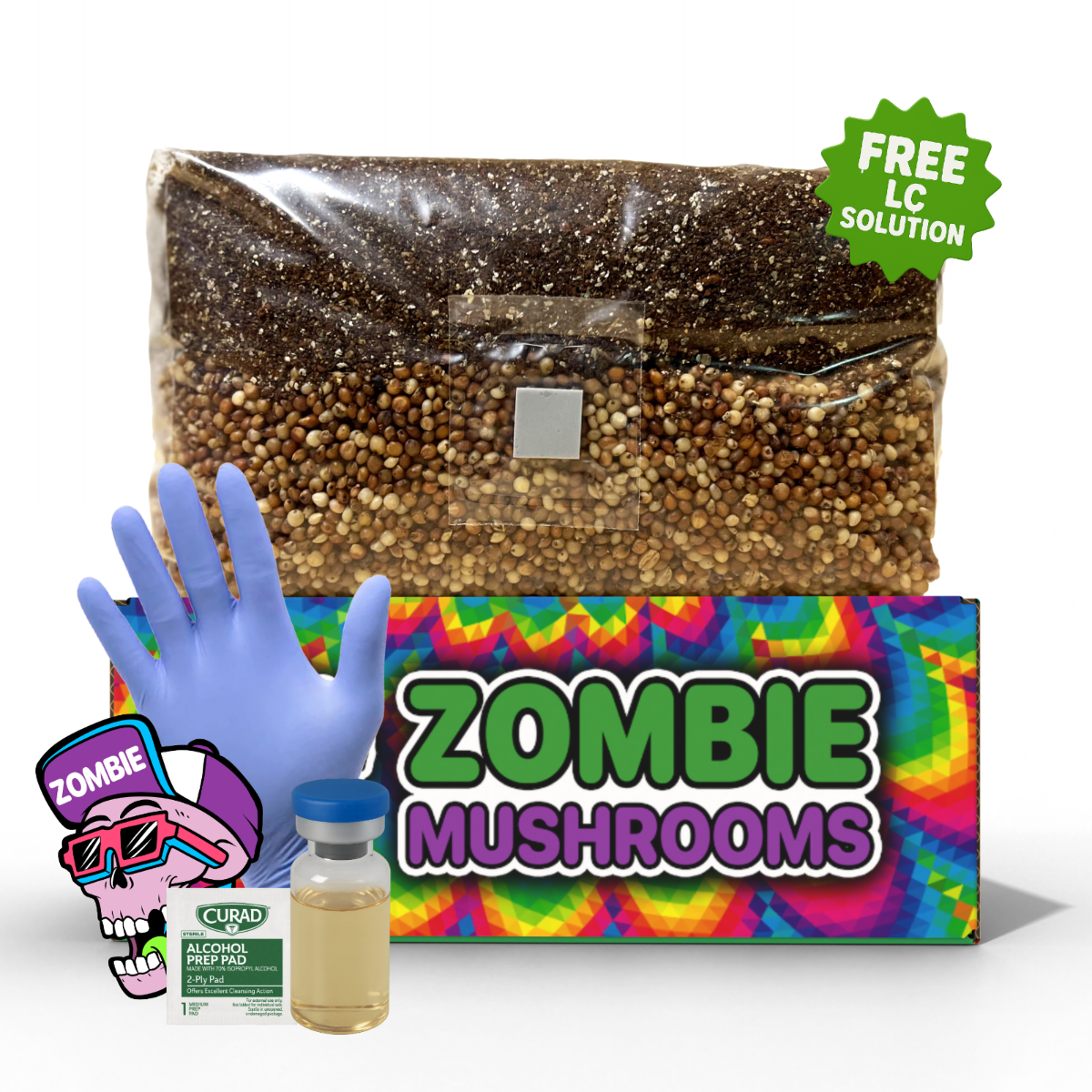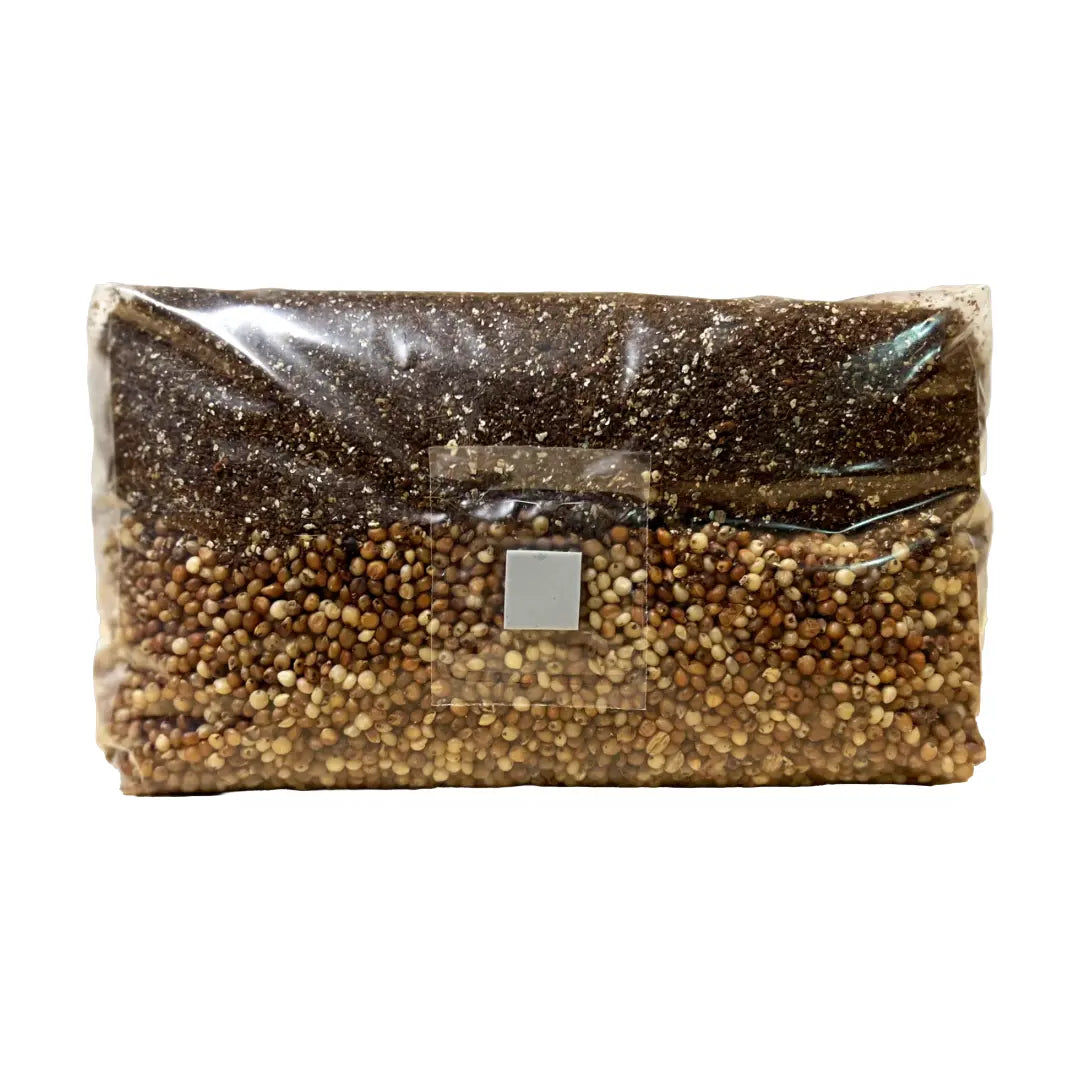- A study by Kawagishi et al. (2008) found that Lion's Mane contains compounds that stimulate Nerve Growth Factor production.
- Lion’s Mane packs antioxidants, anti-inflammatory agents, and proteins while being low in fat and calories.
- Cooking dry before adding fats maximizes flavor and texture in Lion’s Mane dishes.
- Home kits make Lion's Mane accessible to virtually anyone—including beginner growers.
- Lion’s Mane mushroom powder is an efficient nootropic and immune-boosting supplement.
Meet Lion’s Mane Mushroom: Nature’s Seafood Substitute
Lion’s Mane (Hericium erinaceus) is a remarkably distinct mushroom that looks like the flowing white mane of a lion. It is present in North America, Europe, and Asia, and it has been utilized for many centuries in traditional Chinese and Japanese medicine for its properties that improve thinking. It has recently started to gain popularity in Western cooking because of its flaky, seafood-like texture and delicate umami taste. With our easy-to-use mushroom grow bags, you can even cultivate Lion’s Mane at home and enjoy its fresh taste straight from your own harvest.
Different from more common mushrooms like cremini or shiitake, Lion’s Mane keeps its form well when cooked and provides a tender inside with crisp, golden edges when prepared properly. Because of its look and feel, it is excellent for making vegetarian and vegan versions of well-liked seafood dishes such as crab cakes, scallops, and lobster rolls.
In cooking and in the area of functional wellness, Lion’s Mane is becoming very important, combining taste, texture, and strong nutrition in one unique package.
The Nutritional and Functional Benefits of Lion’s Mane
Lion’s Mane mushroom advantages are as remarkable as how it looks. More than simply a flavorful ingredient, this mushroom has turned into a key component in nootropic and adaptogenic wellness communities because of its biologically active substances.
Brain Function and Neuroprotection
Lion’s Mane has two uncommon types of substances, hericenones and erinacines, that have been shown to encourage the creation of Nerve Growth Factor (NGF). This protein is very important for the growth and survival of nerve cells. According to Kawagishi et al. (2008), these substances can improve the regrowth of injured nerves and possibly slow or lessen the effects of brain conditions like Alzheimer's and Parkinson’s disease.
Consistent use as a supplement or adding Lion’s Mane to one's food intake might aid memory, concentration, and mental sharpness, making it a notable functional food for brain health.
Anti-Inflammatory and Immune Support
In addition to brain advantages, Lion’s Mane is full of antioxidant and anti-inflammatory components. A study by Friedman (2016) mentioned that mushrooms like Lion’s Mane contain polysaccharides, beta-glucans, and phenolic substances that assist in adjusting the immune system and fighting oxidative harm in cells.
This makes it especially useful for people wanting to reduce body-wide inflammation, manage immune reactions, or aid general cell health.
Protein-Rich and Low-Calorie
From a nutritional point of view, Lion’s Mane is low in fat and calories, while still providing a reasonable quantity of protein (about 2–3 grams per 100g portion). It is also rich in dietary fiber and includes vital minerals such as potassium and zinc.
This excellent mix helps with many food requirements, making it appropriate for people watching their weight, vegetarians, vegans, and those on keto or anti-inflammatory diets.

Where to Find Lion’s Mane: Store, Forest, or Your Own Home
Getting fresh Lion’s Mane was once like a rare search for something valuable. Now, because of increased interest and better growing methods, there are many methods to obtain these cooking treasures.
Grocery Stores & Markets
Search for fresh Lion’s Mane at
- Farmers markets (particularly those centered on mushroom production or unusual produce).
- Asian supermarkets, which might have it in stock because it is well-liked in traditional cooking.
- Co-ops and organic food stores, where local farmers may provide new harvests.
Always check mushrooms before buying: select those that are solid, fluffy, and clean white with no dark marks or soft areas.
Wild Foraging (Be Careful)
Lion’s Mane naturally develops on hardwood trees like oak, beech, and maple. It is simple to see because of its special shaggy appearance. However, if you are not used to wild mushrooms, it is important to only gather with professional help or after careful study to stay away from possibly harmful look-alikes.
Grow Your Own with a Kit
One of the most simple and lasting methods to appreciate this special food is to grow it yourself. Companies like Zombie Mushrooms provide easy-to-use kits, often needing just a spray bottle and a clean area.
Grow-at-home kits
- Need very little space, being convenient enough for a kitchen counter.
- Produce mushrooms in only 2–4 weeks.
- Allow you to gather very fresh Lion’s Mane, often at a lower cost than in stores.

Prepping Lion’s Mane for Cooking
Before you can become skilled at lion’s mane recipes, correct preparation is needed to get golden, tasty results.
- Brush, don’t rinse: Use a soft brush or a slightly wet paper towel to clean. Never put mushrooms in water, as they will get soggy and will not become crisp.
- Trim away the brown: If any section of the root base is hard or colored, cut it off with a knife.
- Hand-tear into fillets or chunks: Instead of cutting, gently pull Lion’s Mane into pieces using your hands. This keeps the inside structure whole, like seafood or shredded meat.
Preparing in this way not only keeps the taste but also makes the best surface area for browning and crisp edges when cooking.

Cooking Techniques 101: How to Cook Lion’s Mane Mushroom
To make Lion’s Mane excellent in your cooking, begin with the right method. How much water it has and how well it absorbs water greatly change the cooking process, so accuracy is important.
Step-by-Step Cooking Method
-
First Dry Sauté
Put your torn mushroom pieces into a dry pan that does not stick or a cast-iron pan on medium heat.
Cook for 5–8 minutes, turning sometimes, to let extra water go away. You will hear it make a sizzling sound as it lets out its inside water. -
Add Healthy Fat
Once it is dry and slightly browned, add butter, ghee, olive oil, or avocado oil. Put in the fat slowly and let it soak in before adding more. -
Sear Until Golden Brown
Make the heat a little higher. Gently push the mushroom pieces with a spatula to make it sear evenly. Cook each side for 3–5 minutes until crisp edges form and a caramelized color shows up. -
Season at the End
Sprinkle with sea salt, black pepper, garlic, lemon juice, thyme, or Old Bay. Adding seasonings too soon can stop browning and lessen the final taste. -
Serve Right Away
Lion’s Mane is best enjoyed right after cooking, while it is still hot, crisp outside, and juicy inside.

Try These Irresistible Lion’s Mane Recipes
From fancy first courses to filling main meals, Lion’s Mane works well in many types of cooking. These lion’s mane recipes show how amazingly flexible it is
Lion’s Mane Crab Cakes
- Ingredients: Cut Lion's Mane mushroom into small pieces, vegan or regular mayo, breadcrumbs (panko), Dijon mustard, chopped celery, lemon juice, and Old Bay seasoning.
- Instructions: Mix all ingredients, make into small round shapes, and sauté until golden brown. It goes very well with remoulade or aioli.
Garlic Butter Lion’s Mane Steaks
- Sear thick, flat pieces of Lion's Mane with garlic, rosemary, and butter.
- Finish with a little lemon for a meatless main dish that still pleases those wanting steak.
Lion’s Mane Burgers
- Mix cooked mushrooms in a machine with lentils, flaxseed, onion, garlic, and spices using quick pulses.
- Make into round, flat shapes, cool them, and sear. These burgers stay together nicely and give a very good umami taste.
Lion’s Mane Alfredo Pasta
- Sauté mushrooms and mix with a rich cashew or dairy Alfredo sauce.
- Add new basil, spinach, or even sun-dried tomatoes for a high-quality vegetarian pasta dish.
Spiced Street Tacos
- Soak mushroom pieces in cumin, smoked paprika, chili powder, and lime.
- Fry and serve in heated tortillas with slaw and avocado cream.

Pro Cooking Tips for the Best Results
Even experienced cooks sometimes need a quick reminder. Keep these tips in mind
- Provide space in your pan: Do not put too much in at once, use several pans or cook in groups.
- Dry cook first, then add oil: Always cook it dry at first to get rid of water before adding fat.
- Butter and acid are great together: Fats make taste stronger, and acids make it brighter, use them together.
- Season carefully: Do not just use salt, try miso, soy sauce, nutritional yeast, or tamari for a deeper taste.

What to Do with Leftovers
After cooking, Lion’s Mane keeps better than many store-bought mushrooms.
- Keep cooked leftovers in the fridge: They will last 3–4 days if placed in a container that seals well.
- Keep raw mushrooms in paper bags: This helps keep their texture and makes them last longer, about 7–10 days.
- Freeze cooked mushrooms: Quickly freeze them spread out in one layer on a baking sheet, then put them in freezer bags.
Do not freeze fresh raw Lion’s Mane, as it might lose its shape or get too soft.
Cooking with Lion’s Mane Powder
Lion’s Mane mushroom powder offers a simple way that can be kept at room temperature to get the mushroom’s brain-protecting advantages every day, without needing to chop, sauté, or clean.
- How it is made: The mushrooms are dried and ground into a fine powder, often into a 10:1 extract type.
- Uses: Add ½ to 1 teaspoon to smoothies, coffee, lattes, bone broth, soups, or even chocolate recipes.
- Taste: Light, a bit like nuts or earth. It works well with cocoa or spices that warm you up.
Search for types taken out using hot water for the best soaking up of beta-glucans and polysaccharides.

Grow Your Own: Lion’s Mane from Spore to Fork
Growing at home is a satisfying and affordable method to have fresh Lion’s Mane whenever you desire.
How Lion’s Mane Kits Work
- Kit Content: A pre-made block of growing material (often hardwood sawdust) that has been started with mycelium.
- Setup: Cut open the bag, spray with water every day, and put in a place with light that is not direct.
- Harvest Timeline: From when mycelium starts to grow to when you can pick mushrooms is 14–28 days.
Mushrooms grown at home often taste sweeter, cook more evenly, and have more nutrients than those bought in stores.
Lion’s Mane for the Mind, Body, and Kitchen
Lion’s Mane will not only improve your meals, it might also make your thinking sharper, help you create thoughtful cooking practices, and make your connection with food stronger.
Because of its brain support, anti-inflammation advantages, and great cooking possibilities, Lion’s Mane is at the meeting point of health and good food. Whether you are mixing powder into your smoothie, growing it near your window, or searing it perfectly in a pan, each time you use it is a move toward a better life.
Cooking Lion’s Mane is not only for expert chefs. With the correct knowledge, anyone can change this unique, brain-helping food into meals that power the mind, feed the body, and please the taste.



